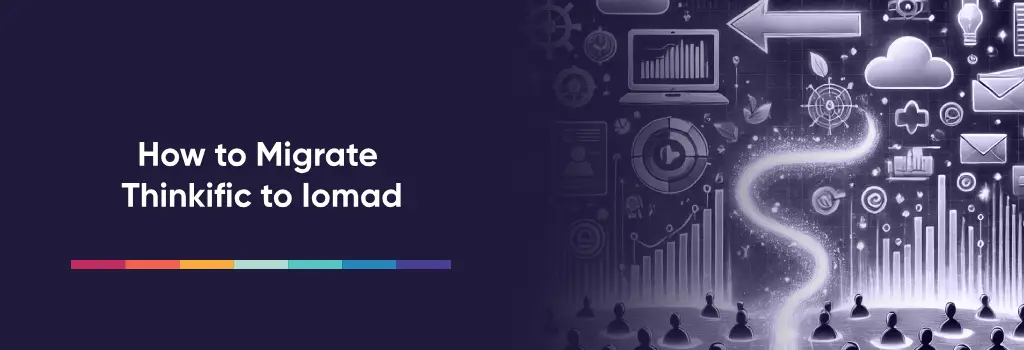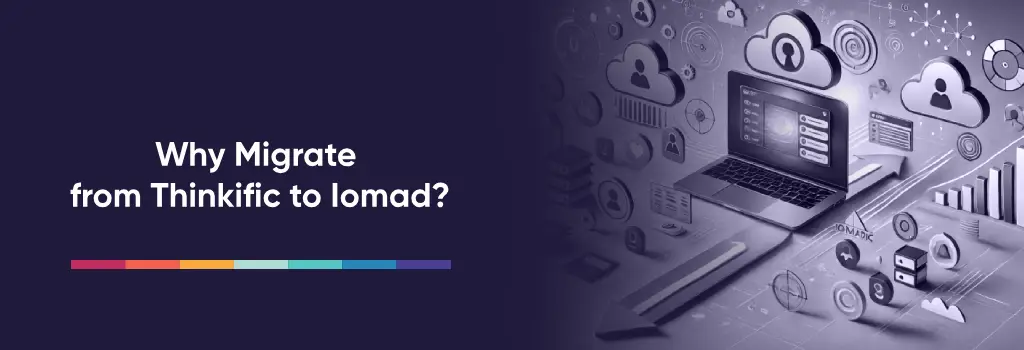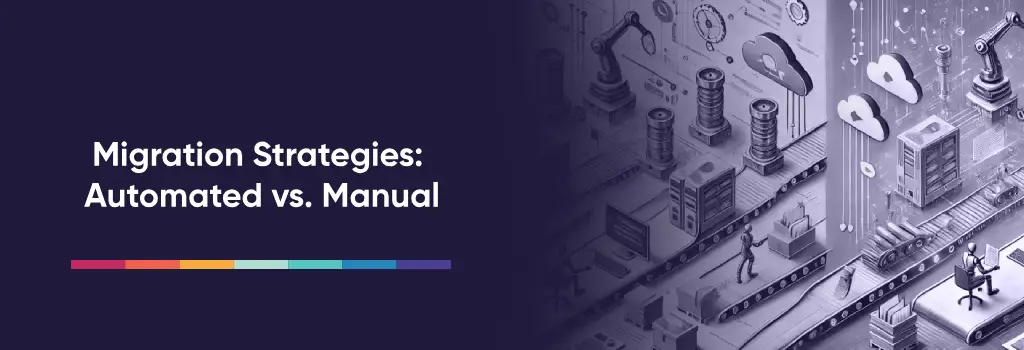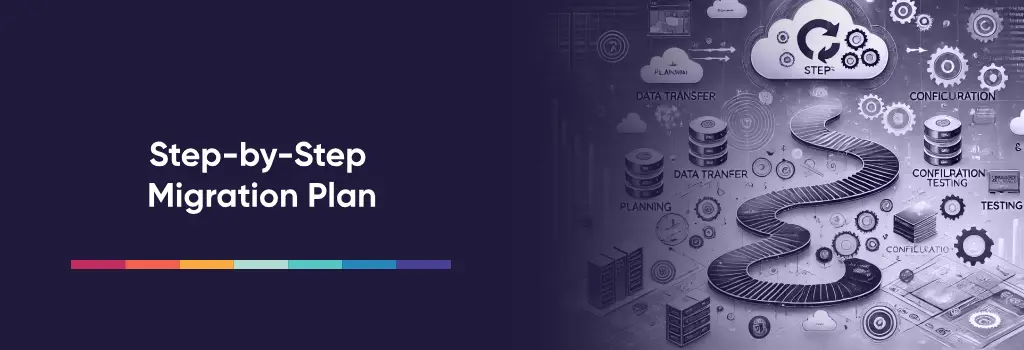Thinkific offers a streamlined cloud-based LMS that’s ideal for creators and small teams. But when you outgrow its limitations—whether it’s branding control, scalability, or multi-tenant features—Iomad, the enterprise extension of Moodle, becomes an excellent next step. This guide walks you through the migration process from Thinkific to Iomad, including strategic decisions, technical steps, and lessons learned.
I am Director of Rahab Ministry (a program of Youth Unlimited). We are impressed with Mindfield’s IT specialists in helping us redesign a website (Rahab.yugta.ca) and their ongoing support. They were responsive and helped us think ahead instead of waiting for us to tell them what needed to be done. We will continue to look forward to their support.
Joanna Yee
Director, Rahab Ministry.
review Source: Google Reviews
Outline
Why Migrate from Thinkific to Iomad?
Before planning your migration, it’s important to understand why Iomad may be a better long-term solution. While Thinkific is great for solo creators and small teams, Iomad is purpose-built for larger organizations that need structure, control, and scalability. Some of the major benefits include:
-
Open-source freedom: Total ownership of your platform, with no vendor lock-in.
-
Multi-tenancy: Create and manage separate learning environments for different clients or business units.
-
Custom workflows: Build unique learning paths, roles, and reports.
-
Cost efficiency: Scale affordably without recurring SaaS fees.
Migration Strategies: Automated vs. Manual
Choosing the right migration strategy can save you significant time and reduce errors.
Thinkific doesn’t offer an official export-to-Moodle pipeline, so you’ll need to decide between manual migration and semi-automated scripts. Each has pros and cons:
Manual Migration (Most Common)
This approach involves:
-
Manually recreating courses in Moodle
-
Uploading multimedia assets individually
-
Using CSV to recreate user lists and enrollments
Best for: Smaller course catalogs, or when design upgrades are planned anyway.
Semi-Automated Migration
This more technical approach includes:
-
Using scripts and Moodle APIs to replicate course outlines
-
Automating bulk user creation and enrollments
-
Batch importing media from cloud storage
Best for: Large Thinkific sites or organizations with in-house tech support.
Note: Because Thinkific is a closed system, some content—like quizzes and lessons—will still need to be recreated manually regardless of your strategy.
Step-by-Step Migration Plan
Once your migration strategy is chosen, follow a structured plan to reduce confusion and minimize disruption.
Step 1: Audit Your Thinkific Content
Begin by identifying what you need to move:
-
Courses and quizzes
-
Multimedia assets (videos, PDFs, images)
-
User records, enrollments, and completion data
-
Certificates and bundles
Use Thinkific’s export tools to extract CSVs and download media. Take note of anything that can’t be exported—you’ll need a workaround.
Step 2: Install and Configure Iomad
Set up Iomad on your own infrastructure or through a Moodle hosting provider. Key configuration tasks include:
-
Enabling multi-tenancy (companies)
-
Setting up tenant-specific roles
-
Preparing course categories and permissions
Iomad lets you isolate content and users across different client groups or business divisions—this must be configured early.
Step 3: Rebuild Your Courses
Thinkific and Moodle have fundamentally different structures. Expect to manually recreate your learning content:
-
Use Moodle’s course formats (Topics or Weekly)
-
Upload and embed videos and files
-
Rebuild quizzes using the Question Bank
-
Implement completion tracking and certificates
For interactivity, add H5P or SCORM packages where needed.
Step 4: Import Users and Enrollments
Format the exported CSVs from Thinkific to match Moodle’s bulk user upload format. You can:
-
Use Moodle’s built-in Upload users tool
-
Automate enrollment into courses and companies using cohort sync or custom scripts
Ensure that roles (e.g., student, teacher, company admin) are assigned correctly during the import process.
Step 5: Customize the Look and Feel
Many organizations migrating from Thinkific prioritize maintaining a consistent look and feel to avoid confusing or alienating users. Thinkific’s modern and sleek interface sets a high bar, and transitioning to Iomad (built on Moodle) can feel like a visual downgrade unless actively addressed. A recommended solution is the Edwiser RemUI theme, known for its polished design, intuitive layout, and enhanced dashboard experience. While RemUI offers a great starting point, achieving a Thinkific-like experience typically requires some customization—especially in login pages, course cards, and learner dashboards.
You’ll likely need:
-
A custom Iomad theme that matches Thinkific’s clean look
-
Custom login pages, dashboards, and certificates
-
CSS or template overrides to match brand guidelines
To streamline this process, Mindfield has developed a proprietary plugin that bridges visual and UX gaps between Thinkific and Moodle.
Lessons Learned from Real Migrations
Here are some practical insights we’ve gained through real Thinkific-to-Iomad migrations.
-
Theme customization is essential: Without a visual upgrade, your users may feel like they’ve downgraded.
-
Tenant permissions can be complex: It’s easy to misconfigure visibility between companies. Double-check roles and access.
-
Rebuilding quizzes takes time: Especially if you used custom question logic in Thinkific.
-
Not all content needs to be migrated: Use this as an opportunity to clean out unused or outdated courses.
Why Expert Support Matters in Thinkific-to-Iomad Migration
Migrating from Thinkific to Iomad involves more than just moving content—it requires rethinking user experience, adapting to Moodle’s architecture, and ensuring multi-tenant functionality is properly configured. Hiring experienced Moodle developers can dramatically reduce the complexity, time, and risks involved. Expert developers understand the nuances of Moodle’s course structure, role management, and plugin ecosystem, allowing them to recreate your Thinkific environment accurately and efficiently.
In addition to handling the technical migration, expert teams can provide custom-designed Iomad themes that mirror the clean, intuitive look of Thinkific. They can also supply pre-built templates for user imports, course setups, and tenant configuration, streamlining every step of the process. By partnering with professionals who have done this before, you avoid costly mistakes, preserve a consistent user experience, and get your new platform up and running faster—with branding and functionality tailored to your organization’s needs.
Frequently Asked Questions (FAQs)






